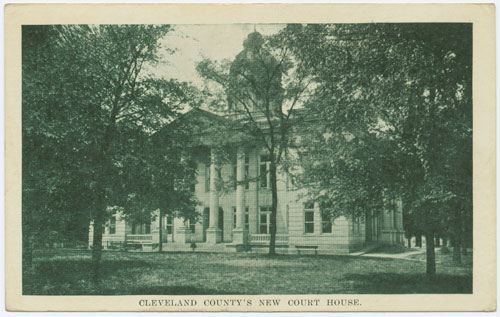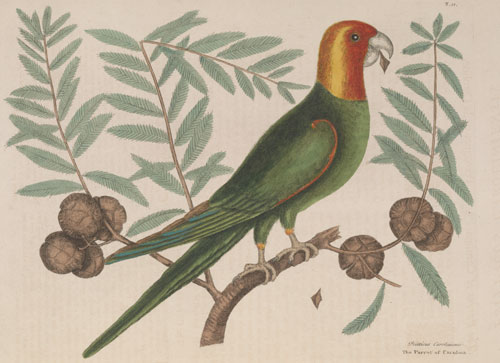
Friends and family of Earl Scruggs say they’re disappointed that the legendary banjo player didn’t live to see the opening of the Earl Scruggs Center in the old Cleveland County courthouse (point of clarification: the building was new when the above postcard was printed some 100 years ago). The Cleveland County native died in Nashville yesterday at the age of 88. Scruggs’ nephew, J.T. Scruggs, told the Shelby Star that his uncle was thrilled by the project. Destination Cleveland County, the non-profit behind the Scruggs Center, received a $1.5 million grant in 2010 to help pay for renovation of the courthouse. Plans for the center include a permanent exhibit showcasing the life of Scruggs as well as rotating displays on local history and music. Brownie Plaster, the chairwoman of Destination Cleveland County, told the Charlotte Observer that volunteers gathered more than 300 hours of taped interviews with the star of the three-finger picking style. The center is tentatively scheduled to open in the fall.
Day: March 29, 2012
Also receiving votes: Ruby Falls
“We have [an opinion poll] in North Carolina that we feel is quite reliable. We tabulate automobile bumper stickers to determine the trend of support for presidential candidates.
“Our latest tabulation indicates that Nixon is in first place, Linville Caverns is in second, and Kennedy is tied for third with Tweetsie Railroad.”
— Letter from Jack Runnion of Winston-Salem to the editor of Time magazine, October 10, 1960
Catesby’s Natural History of Carolina, Florida and the Bahama Islands now available online
Curious about the flora and fauna that populated the Carolinas during the waning days of the Lords Proprietors? Check out the two volumes of Mark Catesby’s The Natural History of Carolina, Florida and the Bahama Islands. We’ve just made it available online.
Catesby’s Natural History is generally credited as the first published work to provide illustrations and descriptions of North American flora and fauna. From 1722-1726 Catesby, an English naturalist, ranged over South Carolina, Georgia and the Bahamas sketching and collecting specimens of native plants and animals. Catesby used the samples gathered and the drawings completed during his trip, his second visit to North America, as the source material for his book. Although most often found as a two-volume set, Natural History was published in 11 discrete sections from 1734-1747 and sold by subscription. Although Catesby died in 1749, his work was republished in 1754 and again in 1771.
The Natural History of Carolina, Florida and the Bahama Islands includes an illustration of the Carolina Parrot (pictured above). Although now extinct, the species was abundant at the time of Catesby’s travels.
Catesby’s work also includes another bird now considered “critically endangered” and possibly extinct. Catesby referred to the Ivory-Billed Woodpecker as “the Largest White-bill Woodpecker,” and wrote that “the bills of these Birds are much valued by the Canada Indians, who make coronets of them for their Princes and great warriors, by fixing them round a wreath, with their points outward.”
Catesby’s illustration of the Ivory-Billed Woodpecker is among the 17 archival reproductions now available for purchase through the Library’s web portal with 1000 Museums. In the coming weeks and months we’ll be adding more Catesbys as well as other prints and photos from the North Carolina Collection to 1000 Museums.


